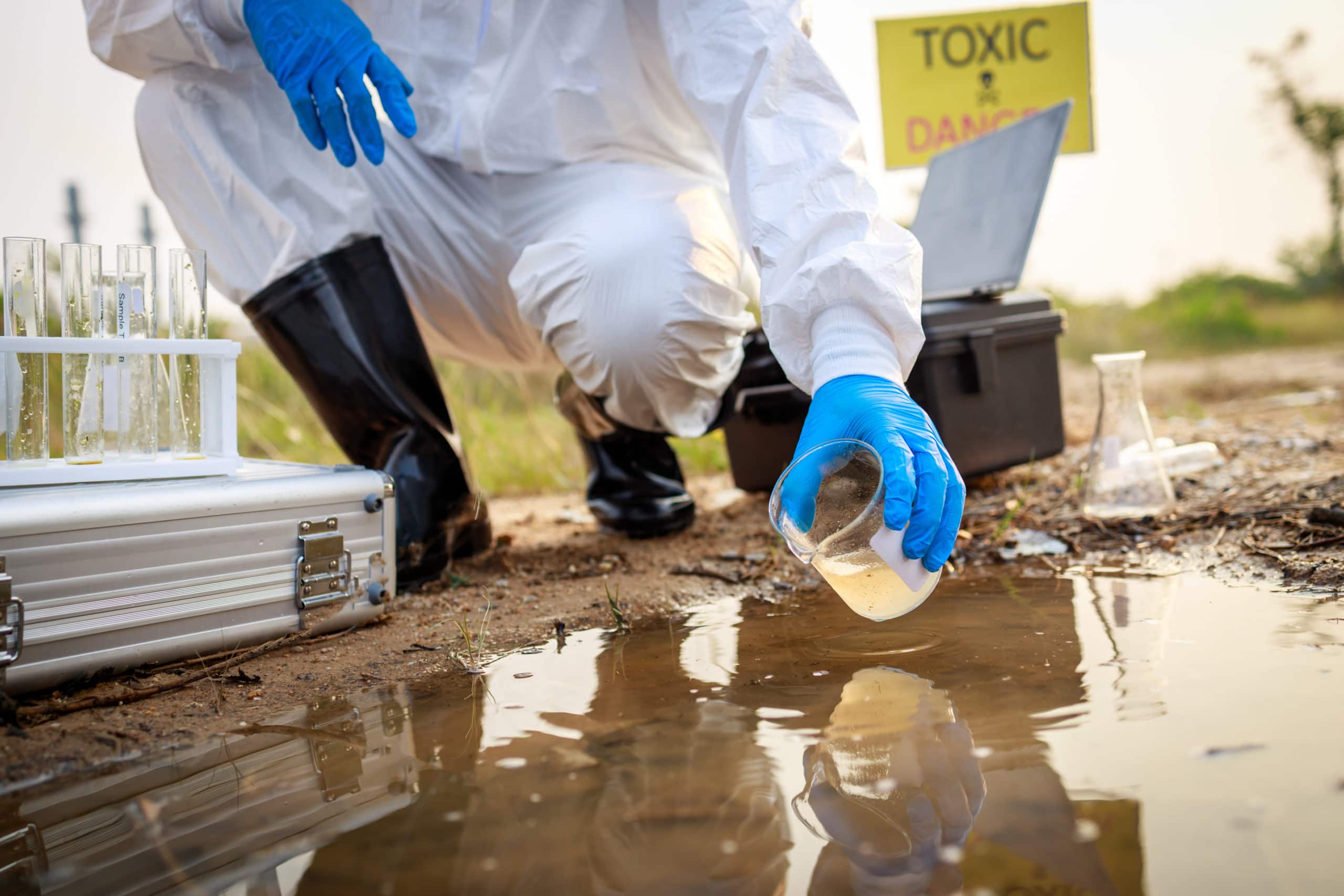Hazardous Per- and Polyfluoroalkyl Substances (PFAS Pollutants) are a group of manufactured chemicals that are often off gassed by industrial manufacturing processes, and which contaminate consumer products. PFAS pollutants can also pollute local water and soil if allowed to seep in. In addition, there are thousands of different PFAS are present in goods worldwide. Unfortunately, researchers have only been able to thoroughly investigate the harmful effects of certain variants. Furthermore, a study done by the Environmental Protection Agency (EPA) found Perfluorooctanoic Acid (PFOA) and Perfluorooctane Sulfonate (PFOS) are among the most common. PFAS break down at an extremely slow rate, causing a buildup of manmade chemicals in our environment and even within our bodies. Due to their slow breakdown, this has earned PFAS the nickname, “forever chemicals.”
Dangers of PFAS Pollutants
PFAS are present in a wide array of products ranging from firefighting foam to food packaging. Therefore, it is common for most people to have a small amount already in their bodies. Despite this, extensive exposure to PFAS has shown negative health effects, especially to those who live close to where PFAS is manufactured or a byproduct of using certain products. A study conducted by Toxicologists Bevin E. Blake and Suzanne E. Fenton discovered the dangers of PFAS pollutants include:
- Kidney cancer
- Liver cancer
- Birth defects
- Thyroid disease
- Delayed fetal and child development
- Testicular cancer
The EPA has set limitations on PFAS concentration amounts allowed in soil and drinking water. Unfortunately, California does not require water companies to assess for PFAS contamination. If they do choose to test, they must report samples that exceed the EPA’s set limits.
Steps to Limit PFAS Pollutant Exposure
Because PFAS are extremely common and some can cause health risks, the EPA has set forth steps to ensure safety. If you get your water from a public drinking water system, there are several steps you can take to reduce the dangers of PFAS pollutant exposure. First, reach out to your local water utility to learn how they are addressing PFAS. Then, you may ask them to evaluate the water for PFAS or have them share results of tests already conducted. Alternatively, if you assess the water yourself, the EPA recommends using a certified test developed by them. If your state does not have testing regulations, you can compare home results to the EPA’s levels for PFAS. Conversely, you should conduct regular well testing if you have a private well.
Protect Your Family’s Health
McCune Wright Arevalo, LLP, (MWA) is dedicated to protecting individuals from dangers outside of their control. Reckless use of PFAS pollutants have put thousands in danger. Oftentimes, large corporations care more about their bottom line than the environment we all live in. The Environmental Practice attorneys of MWA can help by holding large corporations responsible for their actions.
If you live near a PFAS contamination site or where PFAS is manufactured, contact McCune Wright Arevalo to schedule a free consultation by completing the form or calling (909) 345-8110 today!
